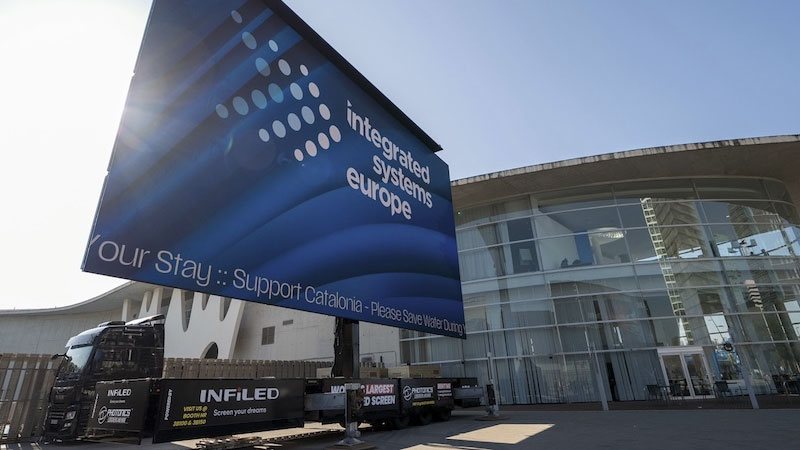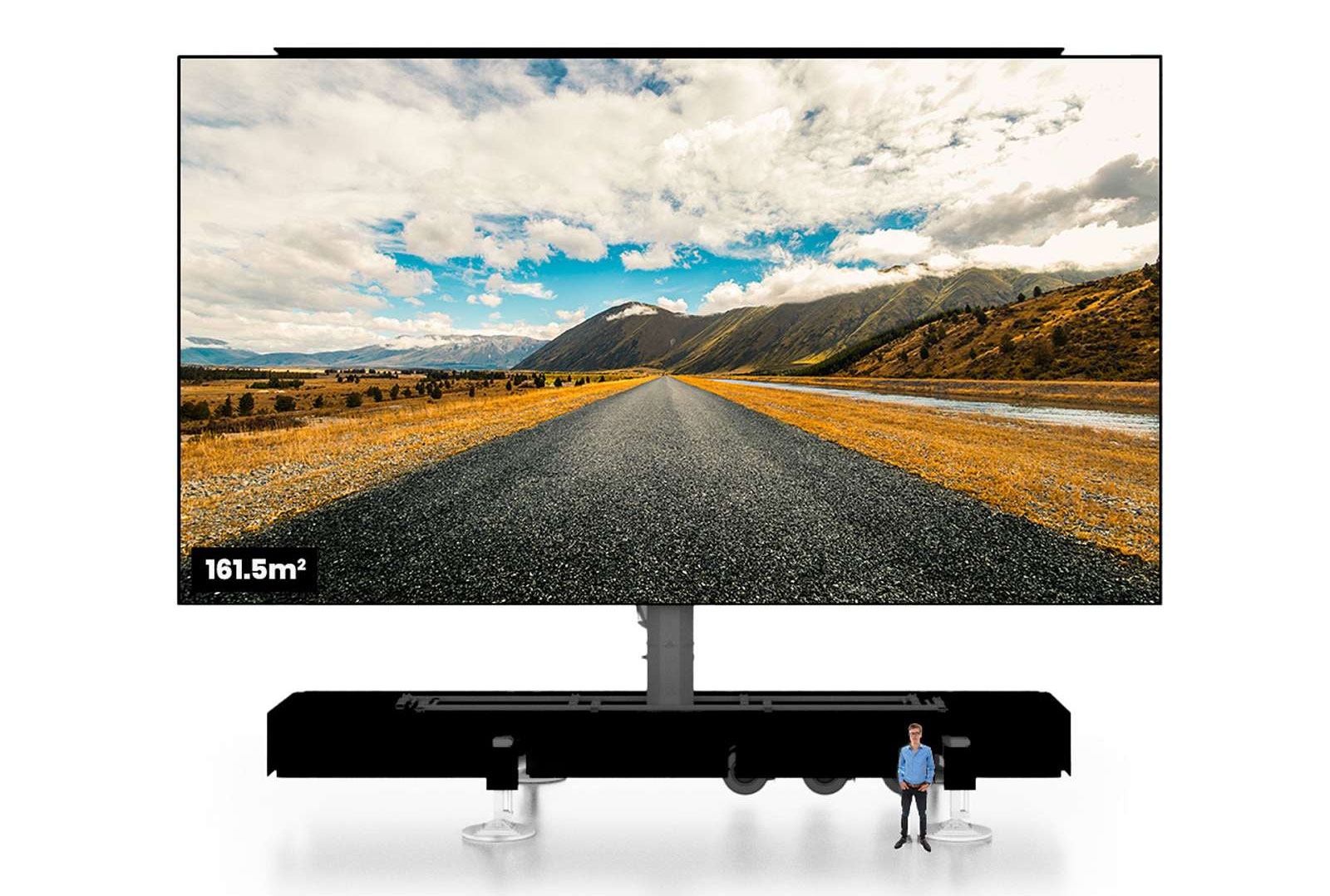World's largest mobile LED screen is 767 inches, with a 4K resolution and a 3,840 Hz refresh rate
Imagine gaming on a 4K screen that's bigger than your house.

Belgian LED displays specialist Photonics showcased its Jumbo162 outside ISE 2025 in Barcelona earlier this month. Jumbo by name and jumbo by nature, the 162 refers to the 161.5 square meter 4K-ready display this mobile device brings to venues.
In more usual monitor parlance, the Jumbo162 has a diagonal of 767 inches. The image below, featuring a normal-sized human in the foreground, helps put the size of the “world’s largest mobile LED screen” into perspective.
On the official product page for the Jumbo162, Photonics says that this expansive display is the successor to its fleet of Jumbo100 displays. These smaller predecessors offer approximately 100 square meters (97.5 sq. m) of screen space. The Jumbo100, with its HD+ resolution, was the best mobile screen Photonics provided for the previous ten years.
Let's examine the specifications closer by shifting our attention to the Jumbo162. The device is made from 374 InfiLED arg.9 panels and leverages the same firm’s Infinite Colors Technology for a wider gamut. We’ve included more tech specs in the table below.
Photonics shares other interesting facts and features about the Jumbo162 in its product blurb. We were interested to read that the display uses the supremely dark Vanta Black surface technology. Combined with the gold-wire full-black LED lamps and precision shader design, this is touted to enable great contrast. We are, therefore, puzzled that Photonics doesn’t share any contrast ratio specifications.
Dimensions | 17m x 9.5m, 767-inch diagonal, 16:9 ratio |
Pixel pitch | 3.9mm |
Max brightness | 5,000 nits |
Viewing angles | 160° H / 130° V |
Refresh rate | 3,840 Hz (?) |
Weight | 28,000 kg, not including tractor |
Power | 63A and 125A, 400V |
Jumbo162 users should also benefit from the Megapixel VR processing, Helios LED processor, multiple screen modes, and 4K-ready visuals. Last but not least, the vehicle trailer is the black thing under the monitor that looks like a huge soundbar. This ‘monitor stand’ allows the display to rotate 360 degrees. Moreover, it is TUV approved and is rated to withstand winds up to eight Beaufort – which should reassure those using this display in the great outdoors.
Get Tom's Hardware's best news and in-depth reviews, straight to your inbox.

Mark Tyson is a news editor at Tom's Hardware. He enjoys covering the full breadth of PC tech; from business and semiconductor design to products approaching the edge of reason.
-
Alvar "Miles" Udell A long cry from AMD's Eyefinity 24 16 years ago.Reply
https://www.legitreviews.com/images/reviews/1069/24panels.jpg -
edzieba ReplyCombined with the gold-wire full-black LED lamps and precision shader design, this is touted to enable great contrast. We are, therefore, puzzled that Photonics doesn’t share any contrast ratio specifications.
First, because being an emissive display the static "0 to 255" contrast ratio is a divide by zero error, so a nonsensical measure. Second, because it's an outdoor display so contrast ratio will vary continuously with ambient and incident light levels (even varying across the display itself due to its size, e.g. if half is shaded by a nearby tree).
In practice, users would be tuning the response curve to match the content being displayed so achieved contrast in the lighting conditions encountered (e.g. inside a covered stadium or outdoors at night vs. outdoors midday) is adequate for the content presented. -
bit_user Reply
If this is an accurate stat, then what it's probably referring to is the base frequency of some sort of PWM scheme used for varying LED brightness. Without any sort of dithering, that would give you 64 levels of intensity per 1/60th of a second (i.e. equivalent to a 6-bt + FRC LCD monitor with a native 60 Hz refresh rate). 4k resolution would afford you the margins to use dithering to achieve much greater precision.The article said:Refresh rate: 3,840 Hz -
Giroro LED displays can be arbitrarily large, and resolution scales linearly with size. Making a big one is not impressive, not even that stupid building in las Vegas.Reply
The hard part is making an LED display small. -
TwoSpoons100 The 3,840Hz is clearly not the frame refresh rate - that would imply a colossal video bandwidth at 4k.Reply
The impressive thing is that they mounted this on a pole, on a truck. -
Jabberwocky79 I'm considering installing one of these in my living room, but I'm concerned about the pixel density, even at 4K :sneaky:Reply
